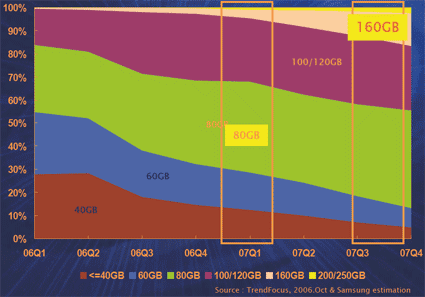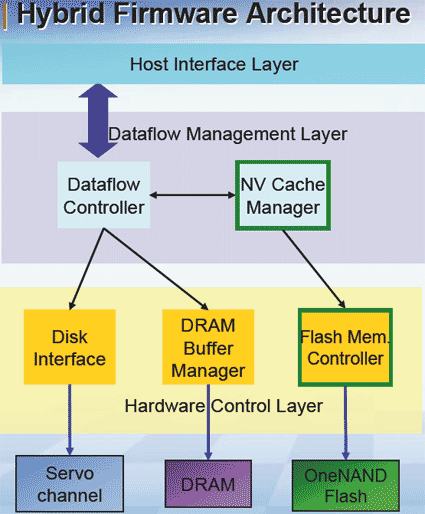WD Brings 250 GB HDDs to Notebooks
The State Of The Hard Drive Union
As already mentioned, all hard drives in this roundup utilize perpendicular recording technology to increase data density. Eventually, this also has an impact on performance, as data transfer rates usually increase as you increase the storage density. At the same time, we have observed that access times seem to be increasing. Obviously, precise head positioning is becoming an issue, because it simply takes time. However, overall I/O performance doesn't suffer from this, as all the new drives typically outperform older models even though their average access time is slightly longer.
All hard drive manufacturers are switching to Serial ATA interfaces; some utilizing SATA/300 speeds, others like Western Digital stick to SATA/150. If you analyze our power consumption results in our Interactive 2.5" HDD Charts, you will realize that drives with SATA interfaces require slightly more energy than their UltraATA counterparts, and that SATA/300 also requires slightly more power than SATA/150. Since 2.5" drives cannot even saturate 50% of the SATA/150 bandwidth of 1.5 Gb/s (150 MB/s), we don't see any point in deploying 3 Gb/s interfaces, because the only difference it makes is the increased power draw. Luckily, SATA/300 drives can also be operated at SATA/150 speeds.
The new generation of 2.5" hard drives based on perpendicular magnetic recording yields maximum capacities of up to 250 GB per drive, or cost-efficient single-platter hard drives at 120 GB capacity. The reason why so many notebooks still are being equipped with 80 GB 2.5" drives is the fact that 80 GB is the per-platter capacity of mainstream 2.5" drives. We expect the hard drive mainstream for 2.5" drives to be 120 GB at 5,400 RPM before the end of the year.
In addition to mainstream devices, there will still be 2.5" 7,200 RPM drives for performance users. The maximum capacity today is 160 GB; 200 GB drives at 100 GB per 2.5" platter are already on the horizon (e.g. Samsung SpinPoint M100). And let's not forget about hybrid hard drives, either: Although this will remain in the upper mainstream for the time being, all drive manufacturers will sooner or later release new products that come with a built-in flash memory of 256 MB or more.
Hybrid hard drives will improve startup performance of Windows Vista and are expected to increase battery runtime of notebooks by up to 10% by stopping a drive's spindle drive and using the Flash memory for as long as possible.
Get Tom's Hardware's best news and in-depth reviews, straight to your inbox.
Current page: The State Of The Hard Drive Union
Prev Page 250 GB Notebook Hard Drives Are Here Next Page Fujitsu MHW2080BH (80 GB, SATA)
Patrick Schmid was the editor-in-chief for Tom's Hardware from 2005 to 2006. He wrote numerous articles on a wide range of hardware topics, including storage, CPUs, and system builds.

